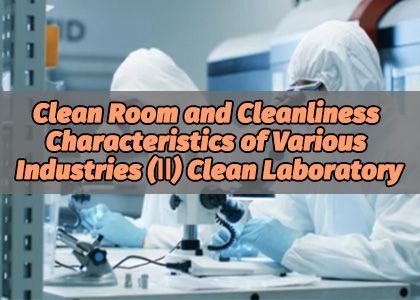
The clean laboratory is divided into general clean laboratory and biosafety laboratory. The experiments carried out in the ordinary clean laboratory are not infectious, but the environment is required to have no adverse impact on the experiment itself, so the laboratory is not equipped with protective facilities, and the cleanliness must meet the experimental requirements.
Biosafety laboratories are equipped with first-level protection facilities, which can realize the biological experimental determination of second-level protection. Biosafety laboratories are required for scientific experiments in the fields of microbiology, biomedicine, functional experiments and gene recombination. The core of the biosafety laboratory is safety, which is divided into P1, P2, P3 and P4 levels according to the degree of biological danger.
The P1 laboratory is suitable for a very familiar disease source that does not often cause disease in healthy adults and poses little risk to the experimentor and the environment. In the experiment, the door should be closed, and the operation should be carried out according to the ordinary microbial experiment:
P2 laboratories are suitable for disease sources with a moderate potential risk to people and the environment. Access to the experimental area should be restricted. Experiments where aerosols may occur should be conducted in a Class II biosafety cabinet with an autoclave.
P3 laboratories are used in clinical, diagnostic, teaching, or production facilities to perform work on endogenous and exogenous disease sources that, if exposed and inhaled, can cause severe and potentially fatal disease. The laboratory is equipped with double doors or air lock chambers and an isolated experimental area. Non-staff members are not allowed to enter the laboratory. The laboratory is full of negative pressure and uses a Class II biosafety cabinet for experiments.
P4 laboratory has more stringent requirements than P3 laboratory, and some dangerous exogenous pathogens have a high individual risk of laboratory infection and life-threatening diseases due to aerosol transmission, and relevant work should be carried out in P4 laboratory. Adopt the structure of independent isolation area in the building and external partition, maintain negative pressure in the room, use the I-grade biosafety cabinet for experiments, set up air partition device, shower room, operating staff should wear protective clothing, non-staff are prohibited to enter. The core of biosafety laboratory design is dynamic isolation, ventilation measures are the focus, emphasis on on-site disinfection, pay attention to cleaning and pollution diversion, prevent accidental spread, and need to be moderately clean.